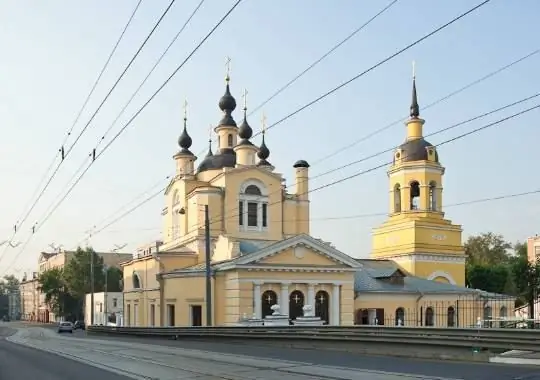
Description of the attraction
Krasnoe Selo, formerly located near Moscow, and since the beginning of the 19th century, the territory of Moscow, is known from references in historical documents from the first half of the 15th century. The village got its name from the Red Pond, and craftsmen lived in the village. Moscow streets began to be called from Krasnoye Selo - for example, Nizhnyaya Krasnoselskaya, on which stands the Church of the Intercession of the Most Holy Theotokos.
Information about the Church of the Intercession has existed since the first half of the 17th century - the wooden structure stood already in 1628, at the end of the century it was decided to dismantle it and build a new stone church. The construction of the new building was completed in 1701, and after only three decades the temple was declared dilapidated.
Work on the construction of another building began in 1745, the previous buildings were dismantled. Parishioners, including the Krasnoselsky merchants donated funds, and six years later a new bell tower, John the Baptist side-chapel and a side-altar in honor of St. Nicholas were built near the church. In the same year 1751, the main chapel was consecrated in honor of the Protection of the Most Holy Theotokos.
At the beginning of the 19th century, a women's almshouse was built at the church. Another charitable institution - a charity house - appeared at the temple in the second half of the century. During the Patriotic War of 1812, the temple was plundered, but not burned. Divine services in it resumed the next year after re-consecration.
In 1925, an attempt was made to close the church and open a club for the children of railway workers in its building, but the believers were able to keep the building for themselves for a few more years. It is known that in the 30s the building of the temple was leased to institutions, and its individual elements (domes, crosses, altar and the upper tier of the bell tower) were dismantled. The restoration of the building's appearance began in the mid-90s after its return to the Russian Orthodox Church. Today the Empire building of the Intercession Church is recognized as an object of cultural heritage of the Russian Federation.






